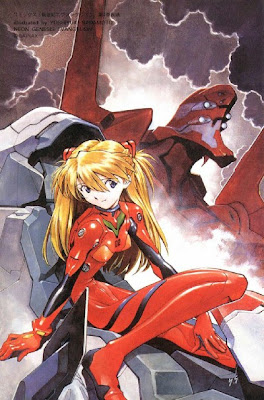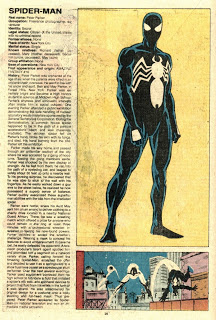Neon Genesis Evangelion: Death and Rebirth

Masayuki’s Neon Evangelion Genesis: Rebirth and Death (1997) illustrates the vast difference in kid-oriented narratives for which cartoons are known, and the bold paths blazed in later years. Nowadays, very adult material can be found in the anime world; this strikes a balance between its adventurous roots and psychologically complex drama.
If you watch N.E.G.: Death and Rebirth, as we just did, you notice the multiple episodes edited into one form---a typical strategy in anime movies based on a series. The heroes have barely entered puberty---a condition of their ability to merge with the fantastic technology that gives the world its savior super robots. The Angels---the 17 gigantic monsters---have their own secrets, but along with vaguely religious imagery and analogies, we’re mostly centered on three teen protagonists.

It’s a heroic drama, but all three of the young pilots have more complicated relationships with their mentors. Shinji‘s reluctance to be a pilot contrasts with his imminent natural skill; Asuka‘s a brash figure of the sort long associated with male super-robot pilots (isn’t there one in each super mecha movie/series?). Rei is almost emotionless, treated much like a science experiment. In fact, we find she’s been cloned for the sake of providing human pilot material. The scene where she’s shocked by her own tears moved me. Asuka’s described as self-involved and pushy, but while her taunting’s not particularly nice, her cockiness and liveliness contrasts nicely with the more emotionally self-contained pilots. She has her own struggle when her confidence and interface skill don’t match; her arrogant comparison to other pilots lends her to misery eventually. Just from her description, I liked her instantly: she’s full of life. Shinji’s shy, retiring personal decency appeals in a different fashion. Rei, you can’t help worrying about, as she seems so withdrawn. We become aware she’s been the subject of experimentation, troubled by her emotionally distant mother.
The mystery of the AT field that allows the pilots to interact with their mechs, called EVAs, has spiritual dimensions that initially evade the NERV project directors and the pilots. Life, death, betrayal, an awkward fascination with the opposite sex (based on genuine hearted friendship---but with hilarious results) as well as hundred-foot tall mechas make it a lot of fun and very involving. The robot designs, for their part, are alien, slender, agile, and in the tradition of Mazinger Z and company, rather frightful.
I think most teens would enjoy the story, which doesn’t pander or talk down. In fact, the stormy relationships with the adults probably contain significant emotional familiarity for its audience. Shinji’s father puts him in an awful, difficult decision when he overrides the EVA to counter a threat from a mysterious “fourth child” pilot, but then he tries to save Rei later. He’s not a villain exactly, but his cold streak makes him ambiguous. Misato seems to have a deeper vested interest in the kids making it through their strange evolution psychologically whole and holds the center, ethically.
The movie’s a simple enough affair for previous fans of the 24 episode series, but there’s not much time for explanation if you’re new. The second “Rebirth” part’s 27 minutes of new material, later incorporated as one-third of a sequel movie; it’s essentially the 25th episode. Comatose Asuka’s placed in her EVA for her own safety when shadowy Seele organization attacks the home of the EVA project, NERV. Black op soldiers meanwhile attempt to hunt Shinji and Rei like wild animals. The action seems overwhelming in the first minutes---the explanations may not be clear---but when the movie settles into the characters, it’s well worth unraveling their troubles. I’m sure a post based on the spiritual analogies would be fertile discussion ground.



Comments
Post a Comment